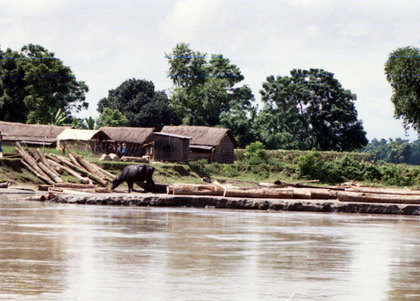How have humans impacted Manas National Park?
While there are a couple of villages on the fringes of Manas National Park, the people in those villages only work in their immediate vicinity and affect the park very little. The biggest problem would have to be with poachers, who illegally invade the park and capture rare animals to sell. This is one of the reasons the pygmy hog population is still in major trouble, even while kept in a protected reserve. However, work is being done to fight against poaching. The Kokilabari unit of the student body under the BTAD has collected many fire arms from poachers, and as a result the deer population has significantly increased from the decrease in meat-selling.
This isn't to say, however, that humans have been all good. In this park, and all over the world, global warming has been in effect, raising carbon dioxide levels in the atmosphere. From Manas National Park's close vicinity to major cities in India, this is probably having more of an effect from gas emissions. The excess carbon dioxide goes into the carbon cycle, one of the four biogeochemical cycles. This then goes into photosynthesis and the exchange between water and the atmosphere, which creates an imbalance in these processes. If it keeps going the way it is, carbon dioxide levels will raise way above the norm, increasing temperatures and disrupting habitats and living conditions of many animals.
This isn't to say, however, that humans have been all good. In this park, and all over the world, global warming has been in effect, raising carbon dioxide levels in the atmosphere. From Manas National Park's close vicinity to major cities in India, this is probably having more of an effect from gas emissions. The excess carbon dioxide goes into the carbon cycle, one of the four biogeochemical cycles. This then goes into photosynthesis and the exchange between water and the atmosphere, which creates an imbalance in these processes. If it keeps going the way it is, carbon dioxide levels will raise way above the norm, increasing temperatures and disrupting habitats and living conditions of many animals.

